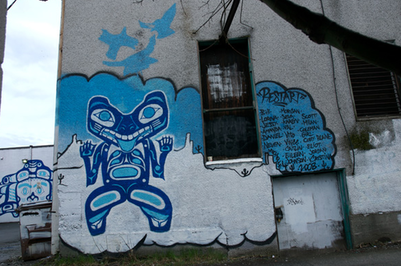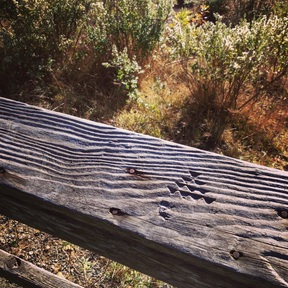
- How does Native graffiti work to interrogate colonial cartographies of territory?
- What kind of spaces do Native graffiti praxes weave together in their expressions of indigeneity and spatialized resistance?
- How can understanding Native graffiti as an anticolonial remapping technology aid in larger projects of decolonization?


 RSS Feed
RSS Feed
